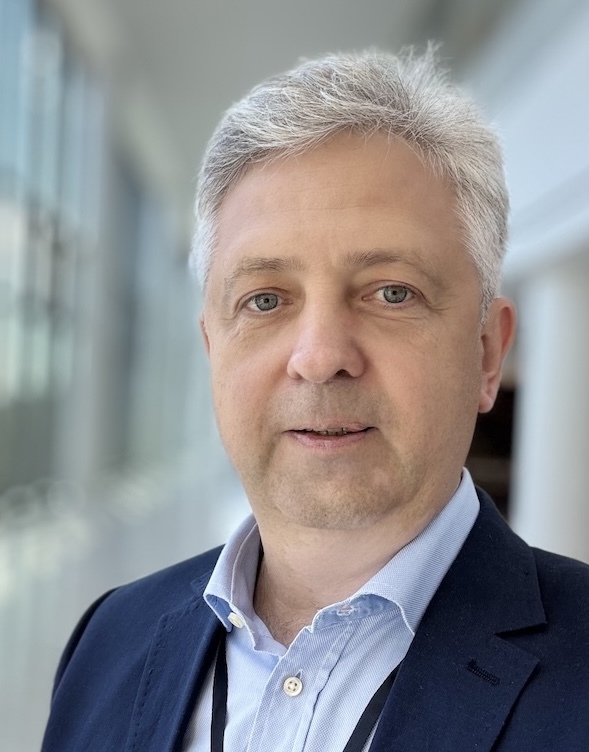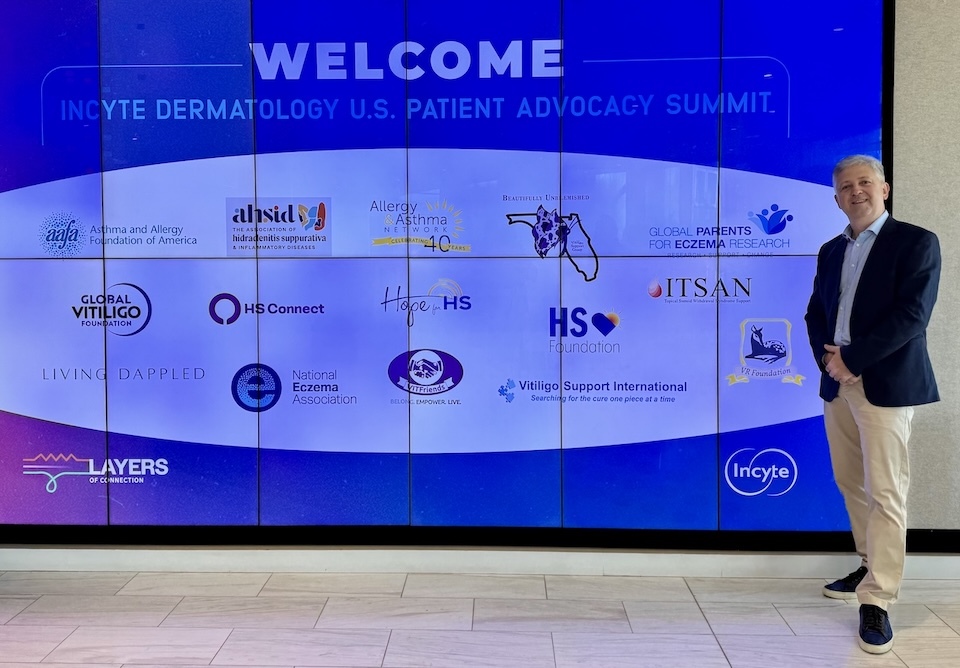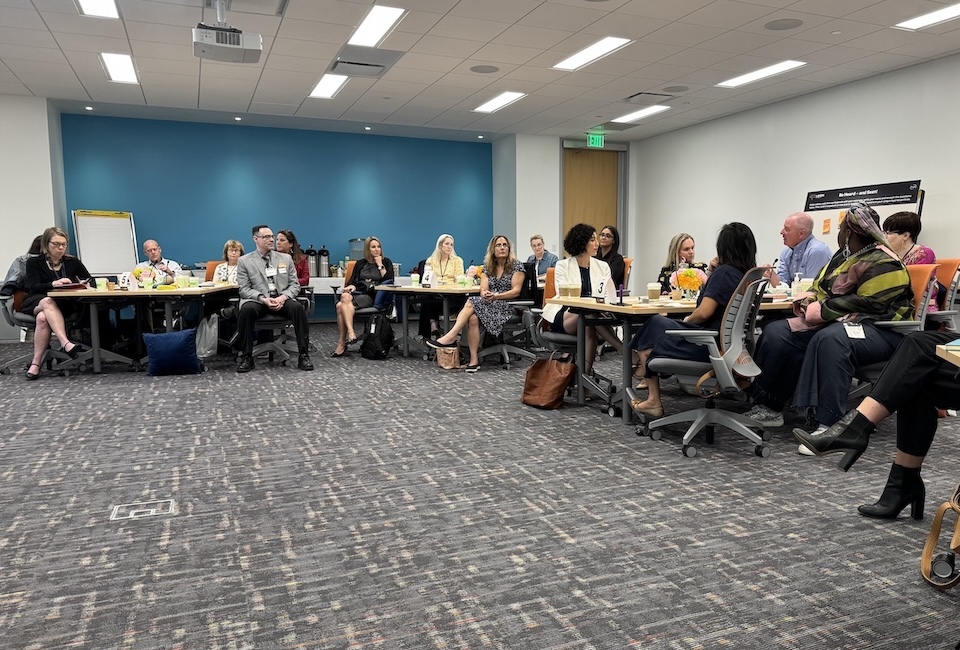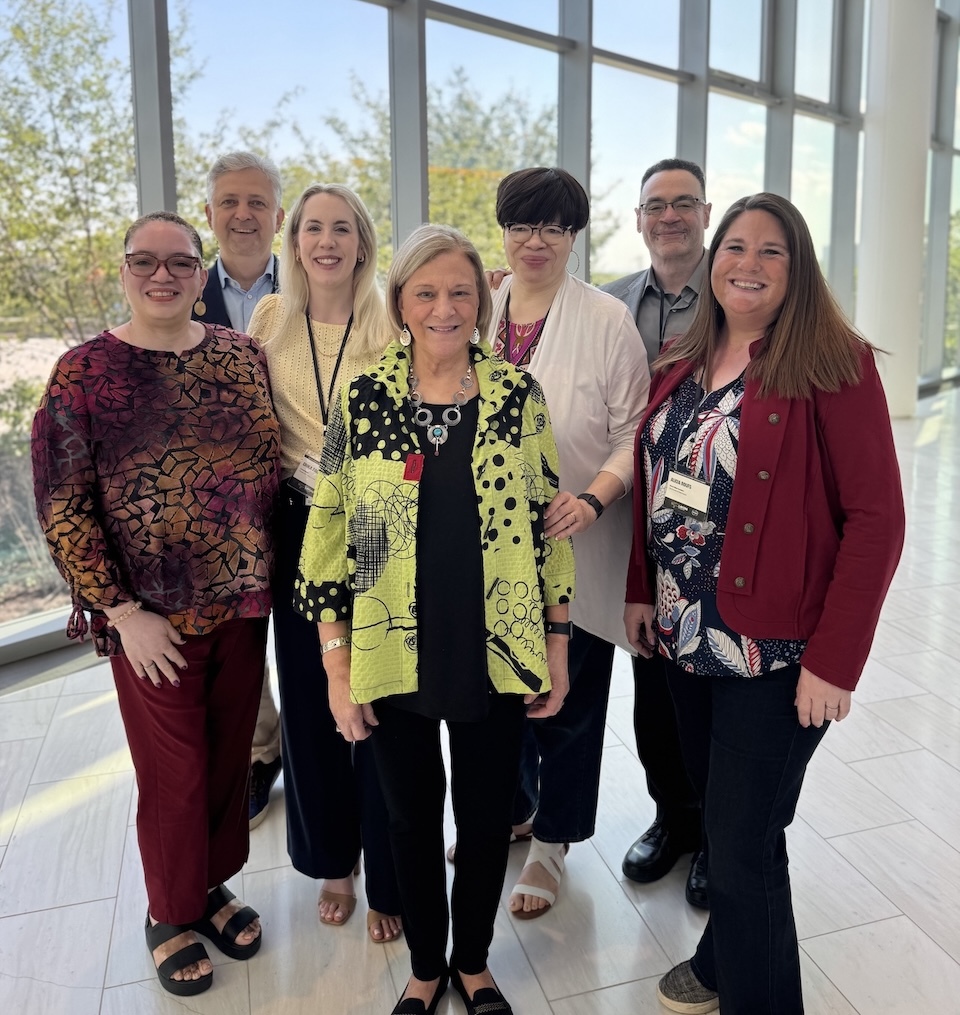New
Patient Advocacy Summit Report. Day Two
The day after our behind-the-doors lab tour — a full-spectrum dialogue between patient organizations and the folks at Incyte.
Vitiligo voices in attendance included Jackie Gardner (VSI), Tonja Johnson (BUVSG), Valarie Molyneaux (VITFriends), Erika Page (Living Dappled), Alicia Roufs and Stephen Taylor (GVF), plus yours truly for VRF.
We kicked things off over breakfast and introductions, then jumped into “Getting to Know Incyte.” This session put CEO Bill Meury, Executive VP Mateo Trotta (collectively dubbed the ET — Executive Team, not the Extraterrestrial as one might think), and Chief Medical Officer Dr. Steven H. Stein in the spotlight.
They fielded everything from the challenges of Opzelura development to the everyday realities of patient access, like:
- How long does the cream take to dry? (About 15 minutes.)
- Is whole-body use safe? (No issues in trials, but FDA approval caps it at 10% surface area.)
- Can it be used on the face only? (Can be used in any part of the body externally including sensitive areas.)
- Can kids use it? (Approved for 12+, with pediatric trials underway.)
- What about combining cream with UVB? (Technically, not approved, - but some use it off-label for faster results.)
In a candid back-and-forth, I asked Bill Meury how Incyte feels about paving the road for competitors like Pfizer, now in late-stage trials.
His take: “it’s the fate of trailblazers.” By the time rivals show up, Incyte plans to have not just one, but several new therapies — topical and systemic — meeting patient needs across the spectrum. That’s why staying plugged into the community matters so much: real-world experiences drive better treatment and long-term safety monitoring.
One theme has repeatedly popped up: vitiligo has become the engine pulling other diseases, like hidradenitis suppurativa, forward. It’s opened doors to adjacent expertise, given advocates a playbook, and — thanks to World Vitiligo Day example — shown just how far patient voices can move the needle.
After a short break came capacity-building sessions to sharpen advocacy impact. The afternoon split into focused tracks, like “Vitiligo: More Than Cosmetic.” Parallel groups tackled atopic dermatitis and hidradenitis suppurativa. These smaller discussions left space for honest talk about patient priorities, practical exchanges, and how advocacy stretches from the clinic into policy.
The highlight reel kept rolling: Missy Banashak, Incyte’s VP of Government Affairs, broke down the knot of agencies that shape policy and coverage. And for some lawmakers, it’s personal. Valarie Molyneaux shared that Rep. Rob Gonsalvo from Massachusetts — who helped the state lead on insurance coverage — has vitiligo in his family.
We touched upon our recent publication about the connection between vitiligo prevalence and industrial pollutants in certain ZIP code clusters. While being very sensitive — which non-profit has chances against a mighty industrial lobby? — it might help legislators from affected areas in the Rust Belt, Midwest or NY/NJ address issues they were unaware of. (The study found that people living in high-phenol exposure areas had 77% higher odds of developing vitiligo.)
Meanwhile, a creative team of photographers set up a studio on-site, capturing striking portraits of participants. Expect to see those shots popping up on profiles soon — a thoughtful touch that made everyone feel seen.
The summit wrapped with a forward-looking brainstorm led by Stephanie Chauvet, Director of Public Affairs in the EU, before shuttles carried us back. One thorny issue at the last session was treatment motivation: how to keep patients on track through the first 24 weeks, when results are slow and dropout rates high. Stop too early, and relapse almost always follows — erasing progress and sending patients back to square one.
This challenge cuts across all therapies for chronic conditions, on- and off-label. It’s why VRF highlights it on the Vitiligo Patient Journey Map (pdf) as the Early Bird stop on the Maintenance Circle.
In my humble opinion, the real solution may come from behavioral economics — the field pioneered by Daniel Kahneman (2002 Nobel Prize) and Richard Thaler (2017 Nobel Prize) for showing how human quirks quietly shape our decisions. Their insights into self-control and behavioral patterns could be game-changers for treatment adherence.
Special thanks to Erica Cech, Director of Public Affairs for North America — or as her team calls her, a “volcano of energy” — for powering every moving part of this event. From seamless logistics to thoughtful details, her coordination made two days of meaningful dialogue possible.
Takeaway for the day: the most meaningful progress happens when patients, advocates, and scientists share the table — listening, questioning, and building the way forward, together.

–Yan Valle
Professor h.c., CEO VR Foundation | Author A No-Nonsense Guide To Vitiligo



Read more:
- A Rare Look Inside Incyte's Labs. Day One
- Not Just Another Cream: Incyte’s Vitiligo Support Story
- Biologic Therapies for Vitiligo: A New Era of Hope
- Vitiligo Patient Journey Map
Or Listen Podcast:
Our podcast Deep Dive In Vitiligo is available on all digital platforms, like Apple Podcasts, Spotify, Amazon, YouTube Music, Podcast Addict, iHeart and elsewhere.
FAQOther Questions
- What is the best therapy for localized vitiligo?
Localized vitiligo, where the white patches are limited to one or a few areas of the body, can be managed with a few treatment approaches. The best therapy usually depends on th...
- What is vitiligo?
Vitiligo (pronounced vit-ill-EYE-go) is a generally unpredictable skin disease that causes a gradual loss of skin color and overlying hair on different parts of the body. Cont...
- Is there a link between vitiligo and depression?
Depression and anxiety are often linked with vitiligo, significantly impacting a person’s quality of life. The connection stems from the shared origin of the skin and brain duri...
Though it is not always easy to treat vitiligo, there is much to be gained by clearly understanding the diagnosis, the future implications, treatment options and their outcomes.
Many people deal with vitiligo while remaining in the public eye, maintaining a positive outlook, and having a successful career.
Copyright (C) Bodolóczki JúliaBy taking a little time to fill in the anonymous questionnaire, you can help researchers better understand and fight vitiligo.

